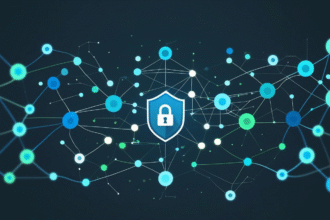It started with one email.
Not a sophisticated, state-sponsored exploit. Not a zero-day in the wild. Just a well-timed, carefully worded phishing email that slipped into an inbox at a mid-sized business in the Midwest.
The employee who received it wasn’t reckless. She wasn’t untrained. She was busy — like everyone else. The message looked urgent, it carried authority, and it pushed her toward action. Within 48 hours, the company was out $2 million.
This is the anatomy of one click, and why every small and mid-sized business needs to treat phishing as more than “just another IT problem.”
The Email That Slipped Through
The attacker didn’t bother with spammy links or obvious red flags. Instead, they spoofed the CFO’s email address and targeted the accounts payable team with a request:
“We’re finalizing the closing documents for our new vendor. Please process the attached wire instructions today to avoid penalties.”
The “vendor” was fake, but the instructions were real — directing money straight into the attacker’s overseas account.
The tone was polished. The grammar was flawless. And the timing? Impeccable. The attacker had clearly done reconnaissance, waiting until quarter-end when finance was swamped with invoices.
The Human Factor
Here’s the hard truth: technical defenses can only go so far. Email filters catch the obvious stuff, but business email compromise (BEC) relies on psychology. Urgency, authority, and timing combine into a trap that even the most cautious employees can fall into.
In this case, the accounts payable clerk double-checked the signature block, noticed it matched past emails, and hit “send.” No phone call. No second set of eyes. The wire was processed within 10 minutes.
By the time anyone realized what happened, the funds had already been laundered through multiple accounts overseas.
The Fallout
The business lost $2 million in a single transaction. Insurance covered only a fraction of it. Clients started questioning the company’s internal controls. Regulators came knocking about compliance gaps.
But the real cost wasn’t financial — it was reputational. Vendors hesitated to extend credit. Employees lost confidence. And leadership had to answer a very uncomfortable question:
“How did one email nearly bring us down?”
Lessons Learned (The Hard Way)
This isn’t just a horror story — it’s a roadmap for prevention. Here’s what this company (and every SMB) should take away:
- Out-of-band verification is non-negotiable – Any wire or payment change request should be verified by phone or secondary approval, no exceptions.
- Layered security – DMARC, DKIM, and SPF records help reduce spoofed emails. Invest in advanced email security, not just the default.
- Role-based training – Finance staff need targeted phishing simulations, not generic “don’t click links” training.
- Incident response planning – Time is everything. The faster you act, the better your chance of clawing money back.
- Culture of caution – Employees should feel safe to question authority when something feels off.
Why This Matters
For many SMBs, a hit like this could be a death blow. Attackers know that. They don’t waste time on complicated zero-days when social engineering is cheaper and just as effective.
Phishing isn’t going away. In fact, it’s getting sharper, more convincing, and often AI-assisted. The best defense isn’t hoping filters catch everything — it’s preparing your people and your processes for the moment when one email slips through.
Because all it takes is one click.









